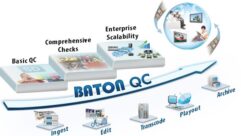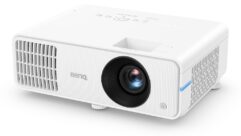Turning Technological Potential into Classroom Reality
Aug 15, 2007 12:00 PM,
By Linda Seid Frembes
Jim Moulton, an educational technology consultant based in Bowdoin, Maine, likes to relay an exchange he had with a kindergarten teacher at a conference session he was conducting in Tennessee. The teacher said: “Jim, I’m a kindergarten teacher, and I’m getting worried about the number of kids coming into my classroom who don’t know how scissors work.”
Yes, scissors—the lowest of low-tech tools in today’s classroom—are a casualty to the increasing emphasis on high-tech learning. “We risk creating kids with a poverty of real-world experience but who are rich in virtual knowledge,” says Moulton, who is also a staff member to the Maine Learning Technology Initiative and faculty associate of the George Lucas Educational Foundation. “The buzzword is ’21st-Century skills,’ but my term is ‘any-century skills’—skills that go beyond technology to include life skills like writing a coherent paragraph.”
As an educational technology consultant, Moulton combines his commitment to making best use of technology with his fundamental believe that people learn best by hands-on experience. Moulton assists K-12 schools to integrate technology into all teaching and learning initiatives, resulting in the development of students who are capable of leadership using 21st-Century skills built upon a solid foundation of traditional skills and tools.
Moulton says that the education market has an increasing awareness of technology such as web resources or AV systems, and educators are becoming far more comfortable wielding the technology. However, the missing connection is often how to combine high-tech teaching tools with traditional skills to create students who can comprehend, discuss, and solve complex problems. “In a classroom setting, a teacher may have access to audiobooks on LibriVox, but what does he or she do with it?” he says. “You can have a social studies teacher who has all the technology but doesn’t use Google Earth as part of effective lessons. My question is, Who is her boss? It’s all about leadership.”
And while there are individual standouts who are melding technology with hands-on learning, Moulton points out that there are few groups or school districts that can say the same. “You can point out individual teachers who are doing it well,” he says. “But what is lacking district-wide is pressure as support. No principal should ask for technology goals because they will get commitments like, ‘I will check my email three times a day.’ What’s needed are goals for becoming a better teacher through the use of technology; it’s not just about checking email. And any progress is OK. Intransigence is the enemy.”
The real driver for change should come from university-level education departments, according to Moulton. “They are still preparing teachers to teach the traditional way,” he says. “The magic is in the veteran teacher who marries the curriculum, kids, and digital technology together. In that case, technology is not an end but a means.”
So is there an ideal classroom technology setup? Moulton says he often hears, “If only the teachers were more comfortable with technology.” The solution, he says, is rather than focus on design of the technology system, schools need to focus on helping teachers be comfortable with discomfort. “Technology will always change and it is difficult because schools have a built-in continuity. However, the transformational power of interactive whiteboards—that kinesthetic interaction with digital media—really crosses the center line,” he says.
In Moulton’s view, necessary AV technology includes large-screen projection systems as well as laptops in a wireless environment, and tools such as a digital video or still camera for capturing and sharing imagery. “More schools are coming along with technology,” he says. “To see the future, look to Maine’s statewide one-to-one computing effort in grades 7 and 8. We’ve really leveled the playing field using technology equipment and professional development.”
So, as technology becomes more advanced, allowing teaching and learning to happen any place and any time, why do we need schools? “Schools are not just places of education. This is where we create the nation’s culture,” Moulton says. “A full education is not just knowledge, but schools are going to be places where skills and rich experiences expand the human connection. There are two networks in schools: the technical network and the human network. It is magic when both work together. “
As Moulton explains on his website: “There are two networks involved when technology comes to school. The technical one is the one that tends to get all the attention—and yes, it is important. But in fact it is the human network that will make all the difference in the benefits realized from any technology investment. It is all about what the people do with the tools. … Nourish the human network with professional development at all levels, and encourage growth of this network through technology-rich project-based learning, and the value realized from your technology placement can be huge.”










